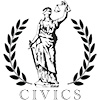| « Occupy Chicago Joins Motel Occupation | Preckwinkle and Brizard to Speak at Forum on Dropouts » |
Environment/Sustainability Sun Dec 04 2011
Reverse Effect: Jeanne Gang on the Chicago River
Jeanne Gang is most commonly associated with the landmark 82-story Aqua building on Chicago's "New East Side." The undulating tower mirrors the river it shadows over and reflects the lake into which its views spill. Water has become a preoccupation for the MacArthur Genius; her designs not only reflect water as a form, but speak to water systems on the whole as meshing with the built environment. Nowhere is there more on display than in Gang's new book Reverse Effect, an innovative design plan that seeks to restore the natural Mississippi River and Great Lakes' watersheds, implement permeable green infrastructure, and reclaim vast swaths of underutilized land along the Chicago River for redevelopment.
Gang's plans for the Chicago River's remediation were revealed in a late November talk at the Harold Washington Library with Steve Edwards of WBEZ and Henry Henderson of the Natural Resources Defense Council. As illustrated in the book's title, Reverse Effect proposes the incorporation of green infrastructure as a way to mitigate the concern of invasive species threatening the entire water system from the Great Lakes down through the Mississippi River to the Gulf of Mexico by restoring the natural watersheds of the Great Lakes Basin and the Mississippi River. Specifically, Gang proposes erecting a barrier near Bubbly Creek, the still-simmering toxic repository of the Chicago River on the border of the Pilsen and Bridgeport neighborhoods. With the barrier in place that separates the watersheds back to their natural state, and the introduction of adjacent green space to act as wetlands around Bubbly Creek, Gang's designs would work to recharge the lake, and provide an opportunity to reclaim the surrounding fallow, industrial land for redevelopment. As Gang stated, "this water problem is an urban problem. Our solution is to make the urban solution a water solution."

Bubbly Creek? Yes, Bubbly Creek. - Designs by Jeanne Gang.
The holistic approach by Gang is indicative of the mindset underfoot that is about restoration and reclamation, rather than large-scale infrastructure works that threaten the long-term health and viability of water networks. This approach reflects the City of Chicago's efforts in cleaning up the riverfront and Bubbly Creek in particular, in an effort to repurpose the river as an environmental and economic catalyst, rather than liability. In the 2005 City of Chicago report, "Chicago River Agenda," the Daley administration outlined its plans to develop new parkland along Bubbly Creek, acknowledging "solutions to sediment and water quality problems will undoubtedly be expensive and take many years to complete." Coupled with the new Emanuel administration's dictate to make Chicago's riverfront the city's "backyard," finding the funds to move forward on this project has taken on an immediate importance.
The beauty of Gang's approach is that its economic potential is manifest. Foremost, the restoration of the natural watershed will work to mitigate the cost fighting against invasive species such as zebra mussels and Asian carp, which currently threaten both the Great Lakes and river systems that feed into the Gulf of Mexico. The environmental benefit of protecting the 95% of domestic freshwater supply found in the Great Lakes by simply erecting the barrier pays for itself many times over, as opposed to the costly treatment of the continued symptoms of new invasive species. The creation of wetlands along the site would allow for groundwater recharge of the lake in a way that addresses some of the concerns raised by Peter Annin in his book, The Great Lakes Water Wars, where the author states Chicago's insatiable appetite for water strains the capacity of the entire regional network. And further, by addressing the watershed issue, Gang creates the conditions for recreational engagement with the river. Such an approach will allow for an attendant rise in new ventures that exploit the river as a natural asset. The potential increase in tax revenue from these businesses will go to further enhance the capability to protect the river and add overall value to the city.
Gang's approach to creating new development opportunities that reconnect the industrial lands surrounding Bubbly Creek into the urban fabric add perhaps the most utility and value. The mix of residential and commercial construction on the extended Chicago waterfront will provide the most stable and lucrative income streams to the city. And by designating green infrastructure as the foundation of the redevelopment approach, there would be an additional decrease in costs when it comes to the treatment of stormwater, the effects of combined sewage overages, and the infrastructure it takes to currently offset such forces. Essentially, Reverse Effect is a manual for creating a natural water body and extending Chicago's urban form. The long-term value inherent in this approach makes it the most common-sense application for the city and region to implement as a sustainable solution to water treatment.
There is legitimate concern as to the cost of Gang's designs. Not surprisingly, these concerns are raised not so much for the overall initial costs, but from entrenched shipping interests of the $16 billion dollar industry along Chicago's waterways. As NRDC chief Henry Henderson said at the Reverse Effect presentation, "Chicago is the 3rd largest transit hub in the world. 55% of the nation's goods come through here. But only 1% came through our canal and waterway network. The costs of maintaining the status quo puts the entire region's environment at risk. This is an opportunity to get down on those remediation costs and move goods more efficiently." Henderson's quote illustrates that the initial costs for implementation are negated by the fact that current spending in the millions goes to maintain a failing system. It is the difference between investment with potential for return, and throwing money down the dirty drain of Chicago's waterways.
Chicago is a city that has repeatedly shown it has the wherewithal and capacity to reinvent itself. Annin's The Great Lakes Water Wars devotes an entire chapter to how Chicago reversed its river to first feed its insatiable thirst, and then to increasingly use its water as a selling tool for exurban municipalities dependent upon the city. The resulting strain on the network, depletion of groundwater, and unsustainability have led to the city creating new frameworks such as the 2005 "Chicago River Agenda" to represent a paradigm shift in the thinking of what the river represents. With this as the backdrop, Jeanne Gang has unveiled a broad, far-reaching, yet realistic way to unlock the river's economic potential by adhering to the environmental and sustainable principles the city seems intent on implementing. Aligned with the goals of the Emanuel administration, Reverse Effect is a prescription for the healthful future of Chicago and the region's waterways, and an effective way to marry growth with stewardship.











